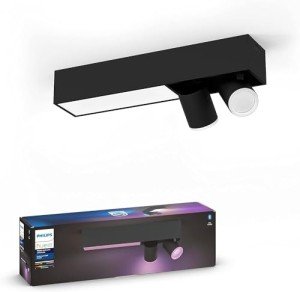Are Contemporary Lighting UK The Most Effective Thing That Ever Was?
Contemporary Lighting in the UK: Transforming Spaces with Illumination
Lighting plays a crucial function in specifying the atmosphere and functionality of any space. In the UK, contemporary lighting has actually emerged as a significant design element, using ingenious services that mix visual appeals with practicality. This short article looks into the different styles, products, and innovations forming contemporary lighting, together with pointers for picking the most suitable fixtures for numerous settings.
The Evolution of Contemporary Lighting
Contemporary lighting in the UK shows the altering tastes and technological advancements in design. It encapsulates a broad array of designs, including:
Minimalist: Characterized by simpleness and tidy lines, minimalist lighting fixtures concentrate on form and function without unneeded embellishments.
Industrial: Inspired by city settings, industrial lighting combines raw materials like metals and woods with strong designs, creating edgy, functional pieces.
Scandinavian: Known for its warmth and simpleness, Scandinavian lighting typically includes soft colors and natural materials, concentrating on creating a relaxing atmosphere.
Smart Lighting: This modern trend integrates technology with design, permitting users to control their lighting with mobile apps, voice commands, or automation systems.
To highlight the advancement and variety in the field of contemporary lighting, think about the table listed below, which highlights crucial qualities of different designs.
Style
Secret Characteristics
Popular Materials
Ideal Spaces
Minimalist
Simple, practical styles
Metal, glass, wood
Modern homes, workplaces
Industrial
Raw, incomplete look
Steel, concrete, wood
Lofts, galleries
Scandinavian
Cozy, warm aesthetics
Natural fibers, light wood
Living spaces, coffee shops
Smart
Integrated technology, automation
Differs commonly
Residences, offices, retail spaces
Picking Contemporary Lighting Fixtures
Choosing the right lighting fixtures for an area requires careful consideration of a number of factors. Here are crucial elements to keep in mind:
1. Function of the Space
Before picking fixtures, consider the designated use of the area. Different functions require various types of lighting:
- Task Lighting: Focused lighting for activities such as reading, cooking, or studying. Examples include table lamps and under-cabinet lights.
- Ambient Lighting: General lighting that supplies general lighting. Ceiling lights and pendant fixtures fall under this category.
- Accent Lighting: Designed to highlight particular features or locations, such as artwork or architectural details. Wall sconces and track lighting prevail options.
2. Design and Theme
The lighting should match the existing decoration. Select fixtures that match or enhance the overall theme of the area, whether it's contemporary, rustic, or diverse.
3. Size and Scale
Think about the proportion of the lighting fixtures relative to the space. A large chandelier might look stunning above a spacious dining table, while smaller pendant lights work well in compact settings.
4. Energy Efficiency
With increasing energy costs and environmental concerns, picking energy-efficient lighting alternatives is vital. Lighting And Lamps are an exceptional option, offering durability and lower energy usage.
5. Versatility
In modern design, adaptability is essential. Fixtures that can be changed or repositioned boost functionality, enabling users to develop different environments as required.
Popular Contemporary Lighting Brands in the UK
The contemporary lighting market in the UK boasts many brands understood for their innovative designs and quality craftsmanship. Some significant discusses consist of:
- FLOS: An Italian brand commemorated for its artistic and iconic light fixtures that frequently function as pieces of art.
- Tom Dixon: A British designer recognized for his modern, industrial designs that perfectly include metal and light.
- Anglepoise: Known for its versatile, practical lamps, best for a variety of settings from office to imaginative studios.
- John Lewis: Offers a range of contemporary lighting options that cater to a more comprehensive audience, including affordable yet stylish alternatives.
FAQs about Contemporary Lighting in the UK
1. What is contemporary lighting?
Contemporary lighting refers to lighting designs and fixtures that reflect present style trends, typically defined by clean lines, ingenious shapes, and using modern materials and technologies.
2. How do I pick the ideal lighting for my home?
Think about the purpose of the room, existing design, size of fixtures, energy efficiency, and versatility. Evaluate how each piece will contribute to the overall atmosphere and functionality of your area.
3. What are some energy-efficient lighting alternatives available in the UK?
LED lights are the most prominent energy-efficient alternative, known for their long life expectancy and low energy intake. Compact fluorescent lights (CFLs) and halogen bulbs are other alternatives.
4. Where can I purchase contemporary lighting in the UK?
Contemporary lighting can be found in various retail outlets, both online and in physical shops. Notable retailers consist of John Lewis, Habitat, and specialized lighting stores.
5. Can contemporary lighting work in traditional areas?
Definitely! Contemporary lighting can improve traditional areas when chosen attentively. Choosing fixtures with a balance in between modern and timeless components can develop an unified design.
Contemporary lighting in the UK represents more than simply illumination; it embodies design innovation and creativity, changing areas and boosting functionality. As patterns continue to progress, homeowners and designers alike can explore an expansive variety of styles and innovations, ensuring that every room bursts with life, warmth, and character. By thinking about the important factors outlined in this post, one can curate a collection of lighting fixtures that resonates with personal style and satisfies practical requirements, ultimately forming comfortable and visually appealing environments.
